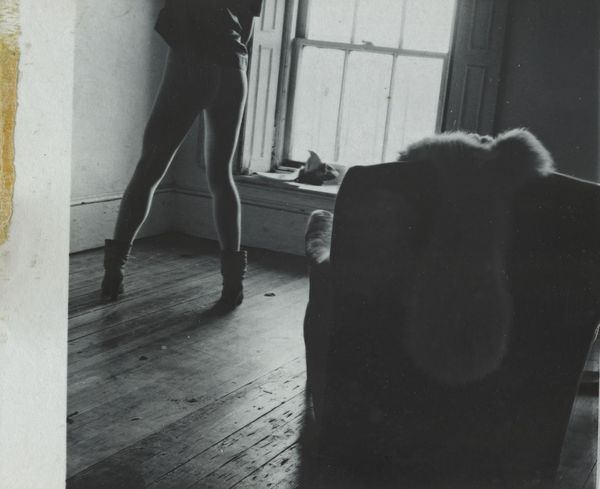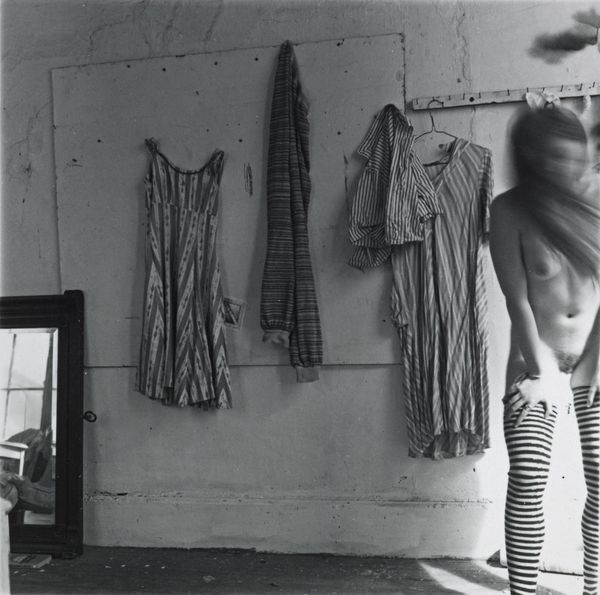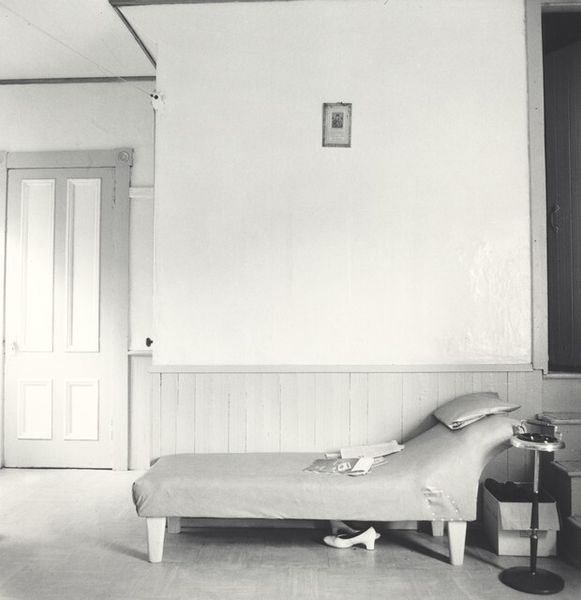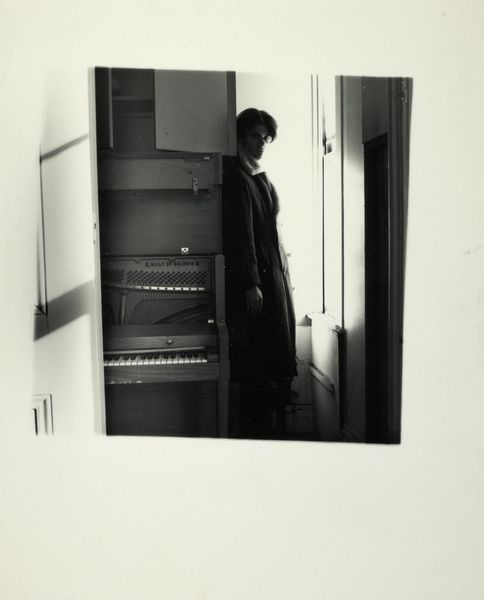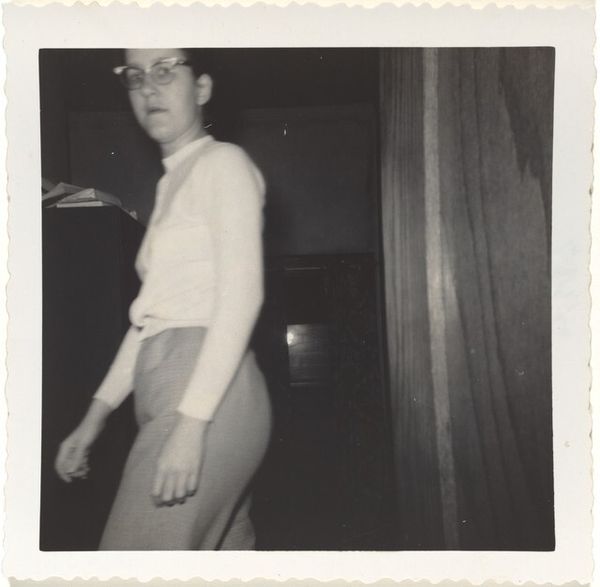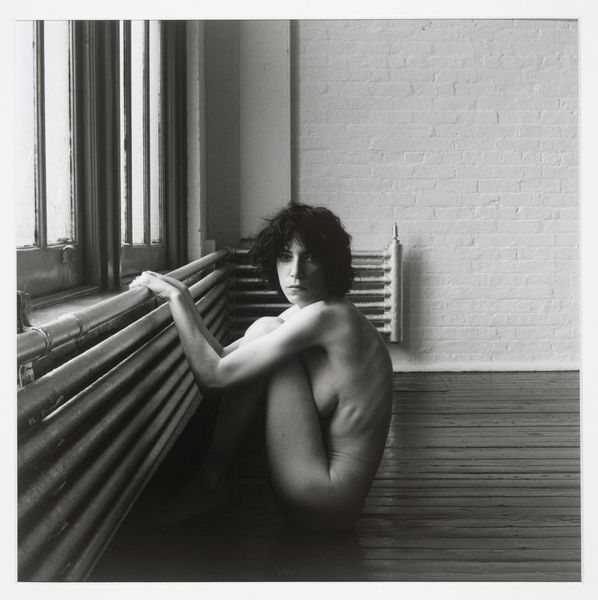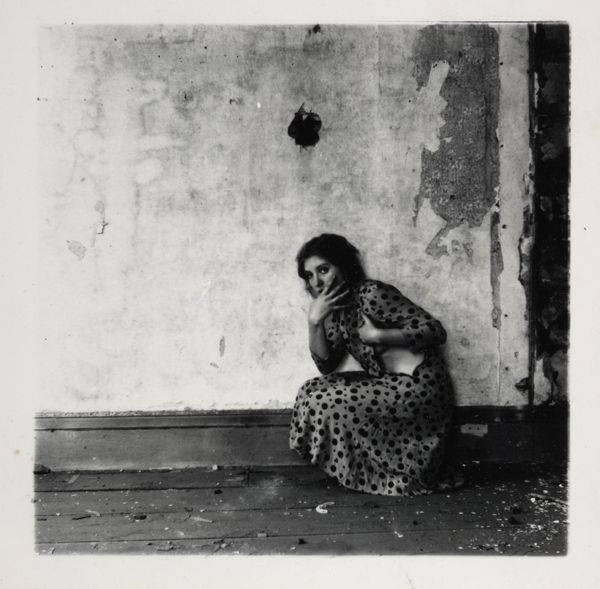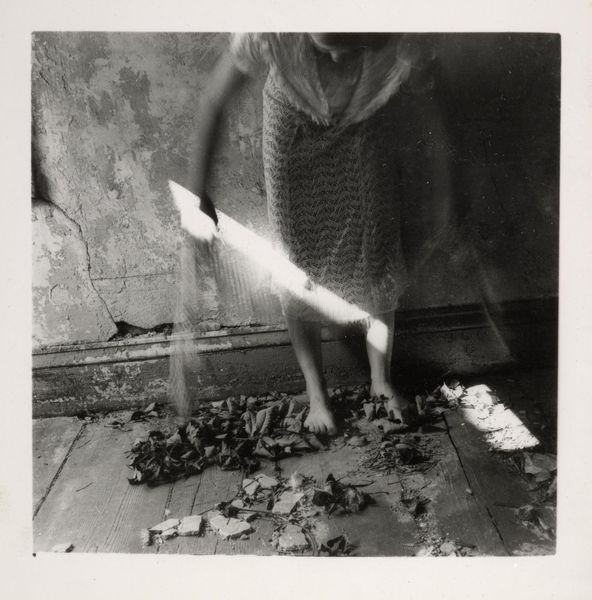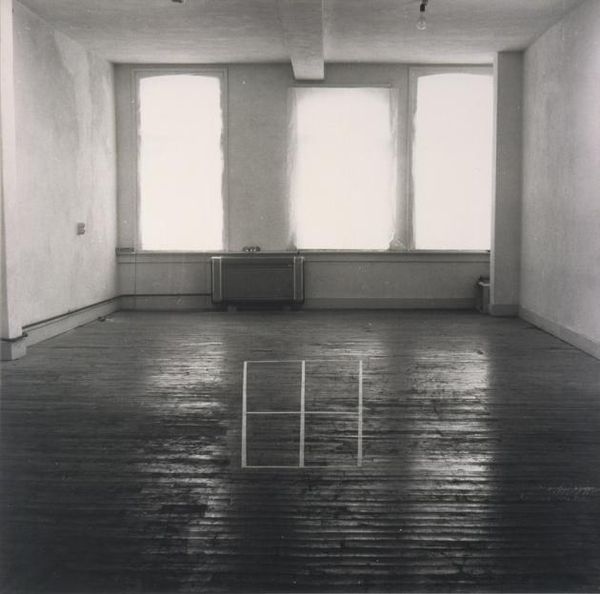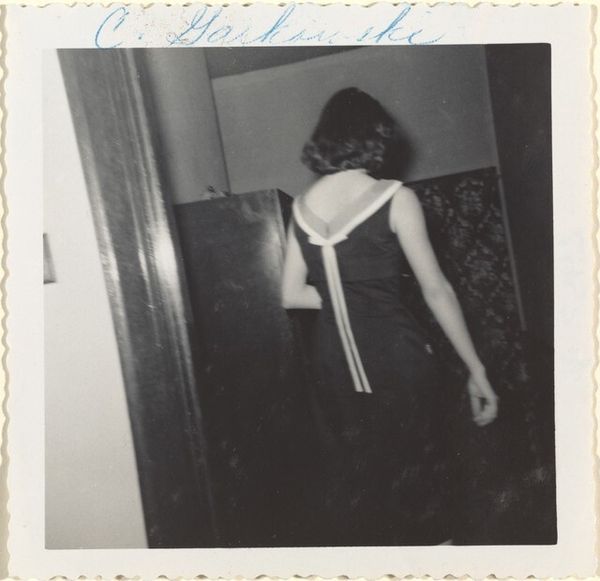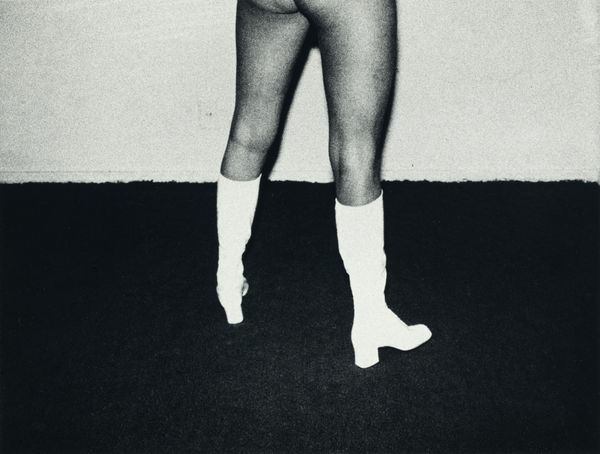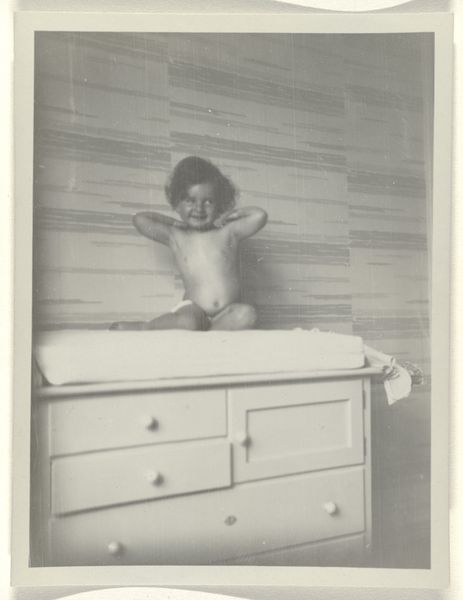
Dimensions: image: 143 x 144 mm
Copyright: © Courtesy of George and Betty Woodman | CC-BY-NC-ND 4.0 DEED, Photo: Tate
Curator: The starkness is arresting. It feels like a Victorian ghost story. Editor: Here we have Francesca Woodman's photograph, "Providence, Rhode Island, 1976," now held in the Tate Collections. Look at the distressed state of that interior. Curator: The peeling paint, the bare bulb socket... they become symbols of decay, almost a metaphor for the figure's vulnerability. Editor: Woodman often used these spaces, drawn to the materiality of neglect. The labor needed to maintain these buildings, or the lack thereof, speaks volumes. Curator: And the shadow! The elongated doppelganger on the floor suggests a fractured self, an anxiety about identity. It's so potent. Editor: She was acutely aware of the photographic process itself—the chemicals, the darkroom alchemy. It all served her self-portraiture. Curator: The shadow becomes another figure. It hints at something haunting. Editor: Woodman's short life was a fierce interrogation of making the female body visible through the labor of photographic materials. It leaves a lasting impact, doesn't it? Curator: Yes, it does. It's a chilling reminder of the power of image.
Comments
tate 8 months ago
⋮
http://www.tate.org.uk/art/artworks/woodman-providence-rhode-island-1976-ar00352
Join the conversation
Join millions of artists and users on Artera today and experience the ultimate creative platform.
tate 8 months ago
⋮
This black and white square-format photograph features the artist sitting in a chair in the corner of an abandoned interior space. The room has bare floorboards and a heavy skirting board. On the right of the composition, behind the artist, is a window through which light enters the scene, while on the left is what looks like a filled-in window surround. Woodman is seated on a white wooden chair and is nude except for a necklace and a pair of dark single-strap ‘Mary Jane’ style shoes. She wears her hair up, with a single lock falling on the right side of her face. Looking straight at the camera, she sits upright with her legs almost together and her feet tucked in close to the chair, while her hands are positioned in her lap just between her legs. Her bare breasts and torso are lighter in colour than the rest of her skin. On the a particularly white area of the floor to her right, forming a diagonal from where she sits, is a dark silhouette or impression of what looks like a female body, with its head at the artist’s feet. The outline is only partial, missing its forearms, hands and left leg.
